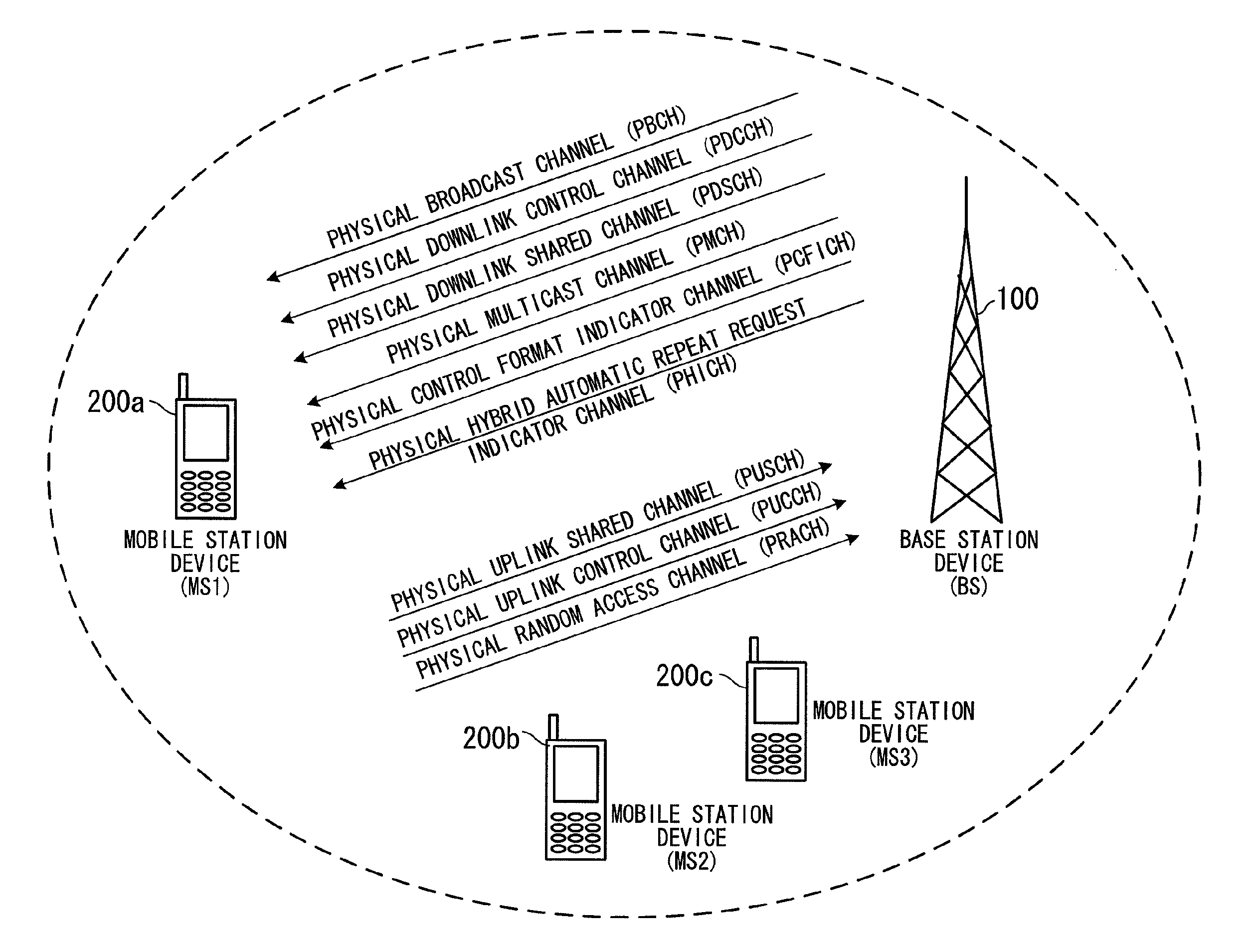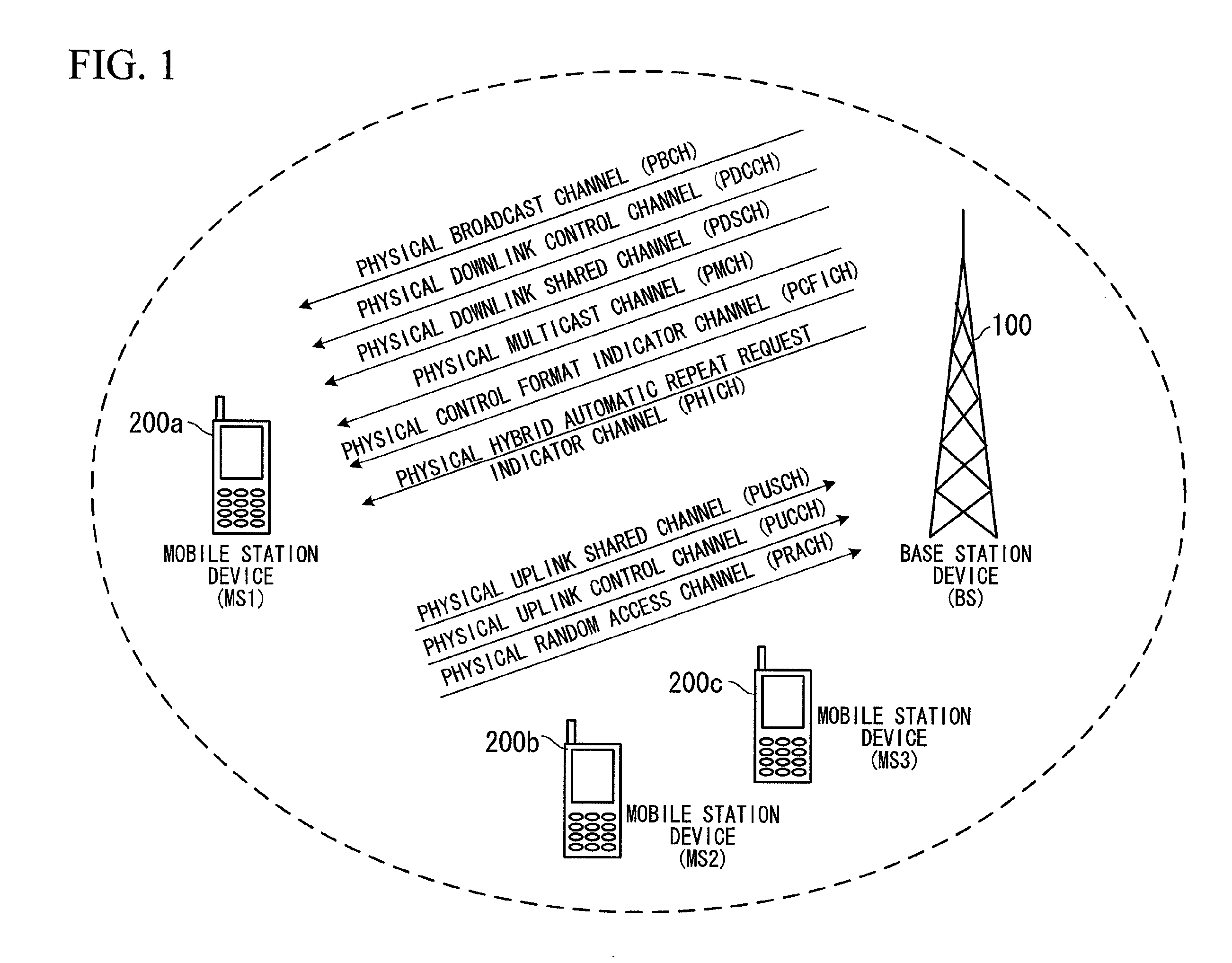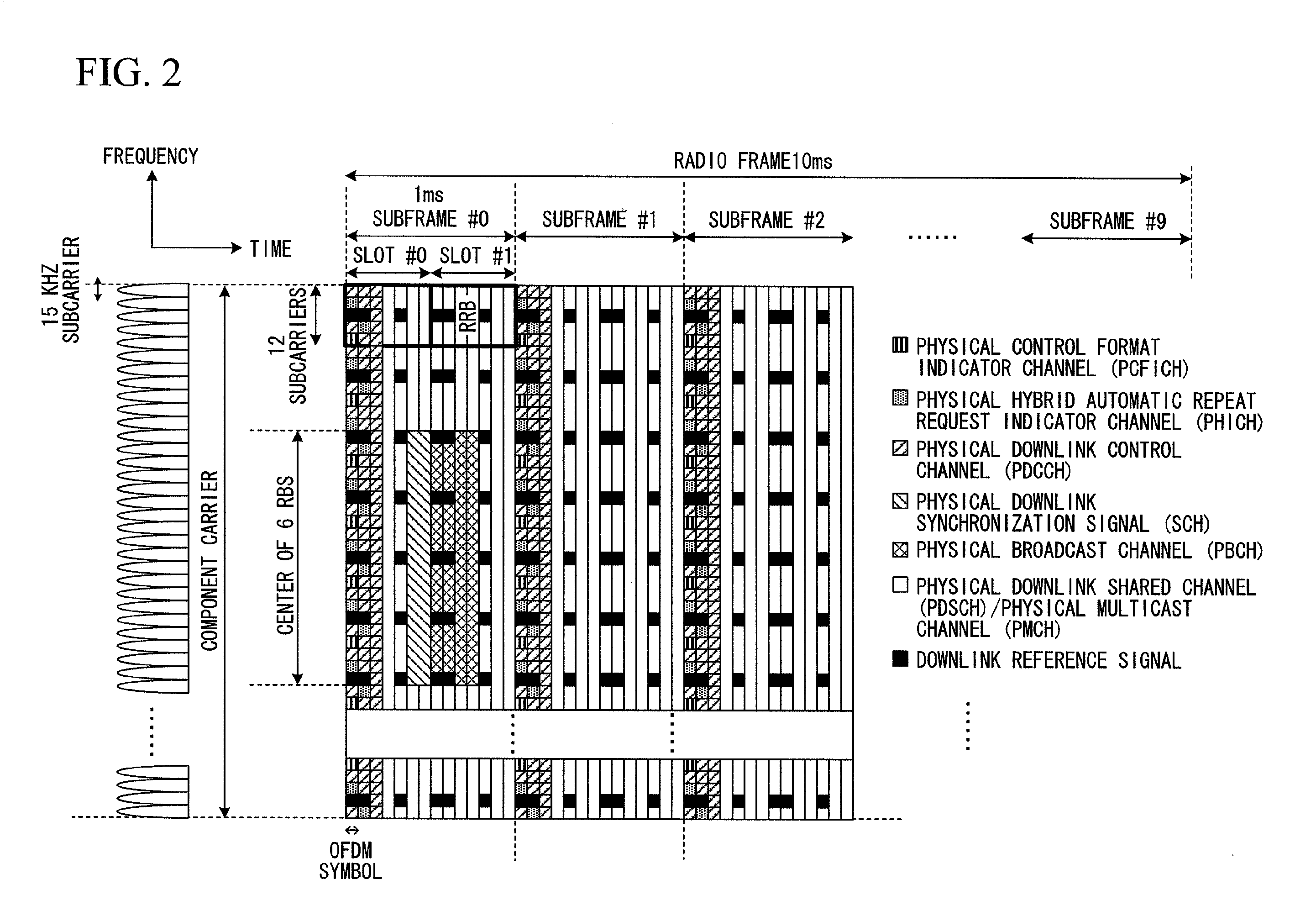Base station device, mobile station device, communication system, and communication method
- Summary
- Abstract
- Description
- Claims
- Application Information
AI Technical Summary
Benefits of technology
Problems solved by technology
Method used
Image
Examples
first embodiment
[0068]The first embodiment of the present invention will be described. A wireless communication system according to the embodiment includes one or more base station devices and one or more mobile station devices between which wireless communication is performed. FIG. 1 is a diagram showing the communication system according to the embodiment. The case where an aggregation is performed in the communication system shown in FIG. 1 will be described.
[0069]First, physical channels of one CC identical to those of FIGS. 2 and 3 may be used. FIG. 2 shows physical channels of a downlink. A PBCH is mapped to broadcast information at an interval of 40 ms. The timing of 40 ms is subjected to blind detection or blind decoding. That is, explicit signaling for timing presentation may not be performed. The PBCH can be decoded in its subframe, that is, is self-decodable.
[0070]A PDCCH is a channel that is used to notify a mobile station device of PDSCH resource allocation, hybrid ARQ (HARQ) informati...
second embodiment
[0182]The second embodiment of the present invention will be described. A base station device and a mobile station device according to the embodiment may be implemented by substantially the same block configurations as those of the base station device 100 and the mobile station device 200 shown in FIGS. 5, 6, 7, and 8 described in the first embodiment. Hereinafter, differences from the first embodiment of FIGS. 5, 6, 7, and 8 according to a sequence of PCI setting of each CC related to the embodiment will be described.
[0183]FIG. 11 is a sequence diagram showing processing of the wireless communication system according to the embodiment. First, the base station device 100 transmits a downlink synchronization signal corresponding to a PCI in a synchronization CC (step S1101).
[0184]The mobile station device 200 acquires the downlink synchronization signal transmitted from the base station device 100 by cell selection or cell re-selection processing, and acquires the PCI of the synchron...
third embodiment
[0197]The third embodiment of the present invention will be described. In the embodiment, description focusing on a downlink reference signal of each CC is given. A base station device and a mobile station device according to the embodiment may be implemented by substantially the same block configurations as those of the base station device 100 and the mobile station device 200 shown in FIGS. 5, 6, 7, and 8 described in the first embodiment or the second embodiment.
[0198]FIG. 13 is a diagram showing an example of a physical downlink frame format according to the embodiment. CC #2 is a synchronization CC and a physical downlink synchronization signal is inserted into a predetermined band of CC #2. CC #1 and CC #3 are extended CCs. Normally, no physical downlink synchronization signal is inserted into a band into which the physical downlink synchronization signal is inserted.
[0199]A stream to be used in a downlink reference signal of CC #2 is generated according to a predetermined gen...
PUM
 Login to View More
Login to View More Abstract
Description
Claims
Application Information
 Login to View More
Login to View More - R&D
- Intellectual Property
- Life Sciences
- Materials
- Tech Scout
- Unparalleled Data Quality
- Higher Quality Content
- 60% Fewer Hallucinations
Browse by: Latest US Patents, China's latest patents, Technical Efficacy Thesaurus, Application Domain, Technology Topic, Popular Technical Reports.
© 2025 PatSnap. All rights reserved.Legal|Privacy policy|Modern Slavery Act Transparency Statement|Sitemap|About US| Contact US: help@patsnap.com



